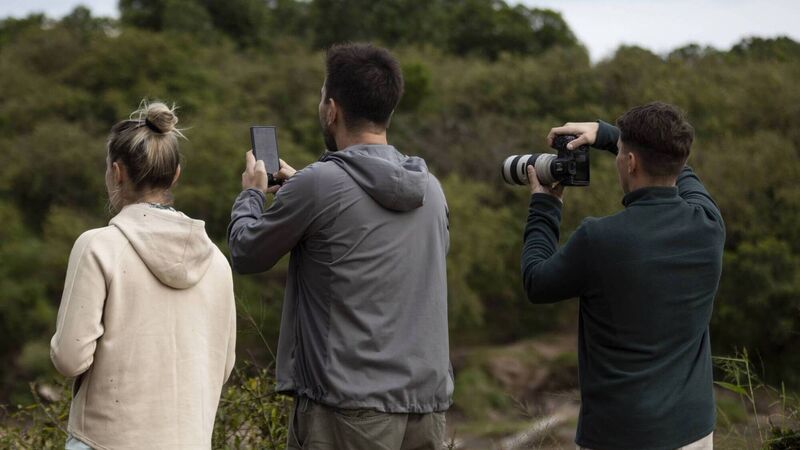Richard Collins: Are we in danger of 'liking' nature to death?

Social media is a major contributor to nature tourism and photography say researchers. However it is increasing direct and indirect disturbance to wildlife. Direct disturbances include predation and disruptions to breeding and feeding. Indirect impacts include diseases and increased poaching of flora and fauna
On Limerick’s O’Connell Street in late 1960, a television set was playing in a shop window. People in the east of the country had access to British TV, but we in the west had no service. On June 1 of that year Telefís Eireann had begun transmitting. Seeing those snowy black-and-white images was, therefore, a memorable experience. Éamon de Buitléar and Gerrit van Gelderen would use ‘the box’ to change hearts and minds and give wild creatures a media voice. The BBC’s David Attenborough led an extraordinary cultural transformation worldwide.
Modestly-priced Japanese binoculars had become available. Birdwatching was now possible for us ordinary Joe Soaps. But there were cultural obstacles to be overcome in Ireland. Interest in nature was seen as a ‘Big House’ preoccupation, the preserve of country gentlemen in slightly-faded tweed jackets of impeccable quality and fishing-flies in their caps. Watching wildlife was deemed a slightly ‘shoneen’ activity. One middle-aged man hid his binoculars until he was well away from home, so that ‘the locals’ wouldn’t see his disgrace. Like ‘secret drinkers’, there were ‘secret birdwatchers’.
A cultural change was needed for wildlife conservation to become respectable. But Éamon was most prescient. His programmes were bilingual; the Irish language revival movement and nature conservation soon became bed-fellows. He did much to break the mould.
Photography, the video camera, and television, opened our eyes to the wonders of the natural world. Public attitudes were transformed thanks largely to these technologies.
But there are no free lunches. The authors of a study just published suggest that there is a downside to the media explosion. Robert Davis, of Edith Cowan University, accepts that the camera has been crucial to the spread of the environmentalist gospel. New technologies are transforming wildlife research and citizen science, but there are problems.
Nature tourism, spurred on by TV, gives communities worldwide incentives to protect their wildlife. However, mass tourism is spawning a monster. Cruise-ships have been barred, and streets closed, in Venice to control the crowds. Locals in Mediterranean seaside resorts can no longer cope with tourist pressure. I remember coming on a lioness with two cubs at Ranthambore, India. They were being tracked and photographed relentlessly by a huge crowd of us tourists.
The authors say there is now "increasing direct and indirect disturbance to wildlife". "'Direct’ disturbance causes breeding failures and increases predation of eggs and young" It disrupts feeding by rendering animals hyper-vigilant. ‘Indirect’ disturbance spreads disease, adds to carbon emissions, and facilitates poaching. Drones are being used to obtain photos and video footage.
The authors are particularly critical of the social media. An estimated 3.8 billion people, half the world’s population, interact with at least one platform. Breeding locations, which would otherwise remain untouched, are being invaded. The rarer a species, the greater is the incentive to approach and photograph it. Animals are even captured for selfies. Endangered plants can be trampled in obtaining ‘the perfect shot’.
When the gods wish to punish us they answer our prayers — Oscar Wilde.








